Introduction
What Do Robins Eat In The Winter: The American Robin, known for its striking orange breast and melodious song, is a familiar sight in North American backyards and open spaces during the warmer months. However, as winter approaches, these birds embark on a remarkable journey. Unlike some birds that migrate to warmer climates, robins often choose to remain in their breeding territories throughout the winter, adapting to the harsh conditions with remarkable strategies.
One of the key challenges for robins in winter is finding an adequate food supply. In the warmer months, their diet primarily consists of insects, earthworms, and fruits. As these food sources dwindle with the arrival of frost and snow, robins must switch to alternative nourishment. One of their mainstay winter foods is berries. These resourceful birds rely on various berry-bearing plants, such as holly, sumac, and juniper, to sustain them through the cold season. The fruit provides essential vitamins and energy, helping them maintain their health and body temperature.
Another intriguing aspect of the American Robin’s winter diet is its flexibility. While berries constitute a significant portion of their sustenance, robins are opportunistic feeders. They are known to adapt to local conditions and food availability, sometimes resorting to frozen fruits and even visiting backyard bird feeders stocked with seeds. Such adaptability showcases their remarkable ability to innovate and survive. This exploration into the winter diet of robins sheds light on the incredible resilience and resourcefulness of these birds in the face of adversity. Understanding what robins eat during the cold months not only deepens our appreciation for their survival strategies but also underscores the preserving the ecosystems that provide the sustenance they need to thrive in the winter.
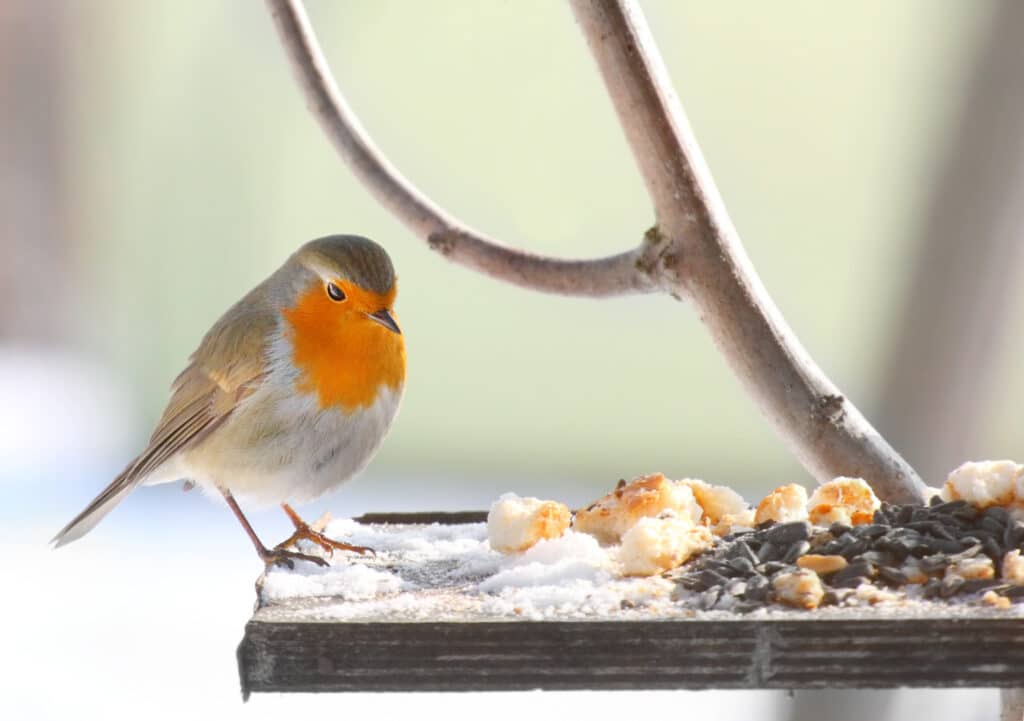
What is the best food to feed robins?
If you’d like to attract robins at bird feeders, feed them chopped apples, berries and mealworms. They don’t eat birdseed. They prefer to forage for their food in lawns and open areas. Providing water is for robins because they like to drink and bathe regularly.
Mealworms: One of the favorite foods of robins is mealworms. These soft-bodied insects are high in protein and mimic the natural diet of robins, making them an excellent choice. You can find live or dried mealworms at bird supply stores.
Fruits: Robins are also known to enjoy a variety of fruits. Apples, cherries, grapes, and berries are all excellent choices. Chop or slice the fruits into small pieces and scatter them in your garden or on a bird feeder. The natural sugars in fruits provide energy for these birds.
Raisins: Robins have a particular affinity for raisins. They are small and easy to handle for these birds. Soak raisins in water for a short while to make them plumper and more appealing.
Earthworms: Earthworms are a natural part of a robin’s diet and provide essential nutrients. If you’re lucky enough to have a garden with healthy soil, robins will likely find their own earthworms. However, you can encourage them by reducing pesticide use and providing a well-maintained garden habitat.
What do baby robins eat?
For the first four days of a nestling’s life, the parent birds regurgitate partly digested food into each baby’s mouth. By five days of age, the nestlings get earthworms that parents break into small mouthfuls. The babies eat more each day. Soon parents give them whole worms and large insects.
Crop Milk: Baby robins start their life by consuming a special food called “crop milk.” This substance is produced by both male and female adult robins and is regurgitated directly into the mouths of the chicks. Crop milk is rich in proteins, fats, and essential nutrients, providing the nestlings with a strong start.
Insects: As baby robins grow, their diet begins to shift. The parents incorporate more insects into their feedings. They capture insects such as caterpillars, beetles, spiders, and flies, and then break them into smaller, manageable pieces before feeding them to their chicks. Insects are a crucial source of protein for the developing nestlings.
Mixed Diet: At this stage, the diet of baby robins becomes more diversified. While they still rely on their parents to provide partially digested insects, they also start pecking at small, soft fruits like berries and tiny pieces of food that the parents bring to the nest.
Varied Diet: As the baby robins near the time of fledging (leaving the nest), their diet continues to expand. They become more proficient at eating insects and fruits. The parents might introduce them to larger and more substantial prey items, such as earthworms, which offer essential nutrients for their final stages of development.
Do robins sleep in the winter?
In fact, many experts believe that robins do not migrate at all during the winter. Instead, robins hibernate during this season. This means that they sleep for long periods of time to conserve energy.
Migration: One of the primary reasons robins seem to disappear in the winter is that many of them are migratory birds. In the fall, as temperatures drop and food becomes scarcer, robins from northern regions embark on long-distance migrations to warmer climates. They may travel south to states in the southern United States, Mexico, or even further south to Central America. These migrations are a survival strategy to avoid harsh winter conditions.
Resident Robins: While many robins migrate, some individuals and populations are considered “residents” and stay in their breeding territories year-round. These resident robins are typically found in milder climates where winters are less severe and where they can find enough food to survive.
Behavioral Changes: Robins that remain in colder regions during the winter undergo behavioral changes to cope with the challenges of the season. They tend to become more solitary, and their behavior shifts from being territorial and singing to being focused on finding food. During winter, robins are primarily fruit eaters, as insects and worms are less abundant.
Roosting: Robins, like many birds, need a safe and sheltered place to sleep and rest at night. During the winter, when the nights are cold, they seek out dense vegetation, evergreen trees, or sheltered areas to roost. These roosting sites provide protection from harsh weather and predators. Robins can huddle together for warmth in these roosting locations, conserving energy during the night.
What are robins favorite fruit?
A Robin’s Favorite Winter Foods
Winter robins eat berries, other fruits, and seeds they find on shrubs, trees, and vines. If robins happen to overwinter near you, you can offer them frozen or fresh fruit. They’ll go for apple slices, raisins, blueberries, strawberries, raspberries, and cherries.
Apples: Apples are another fruit that robins are known to relish. Whether it’s a fallen apple in an orchard or a slice left out as bird feed, robins won’t hesitate to enjoy this fruit.
Grapes: Grapes are a convenient fruit to offer robins, and they are known to readily peck at grapes if placed in a bird feeder or scattered on the ground.
Currants: Robins are attracted to currants, including red and black currants, which provide a tasty and nutritious food source.
Holly Berries: During the winter months when other fruits may be scarce, robins may turn to holly berries as a food source. However, holly berries are less preferred due to their bitterness and lower nutritional value.
Rowan Berries (Mountain Ash): Rowan berries are another type of fruit that robins will eat, especially in regions where these trees are prevalent.
Elderberries: Elderberries are rich in nutrients and are sometimes consumed by robins, particularly when they are ripe and easily accessible.
What is robins least favorite food?
Robin’s favorite foods are sandwiches, not too sweet cakes, and stuff that goes with coffee. Also, her favorite food from Wano Country is soba. Her least favorite food is chewing gum because she can’t swallow it.
Hot and Spicy Foods: Robins are not equipped to handle the heat of spicy foods. Their taste buds are not designed to detect or tolerate the intense flavors of hot peppers and spices. Offering spicy foods to robins is not only unappetizing to them but can also be harmful.
Salty Foods: Like many birds, robins do not have a high tolerance for salt. Excess salt intake can be detrimental to their health, leading to dehydration and other issues. Avoid offering salty foods like salted nuts or salty snacks to robins.
Citrus Fruits: While robins will eat a variety of fruits, they may be less inclined to consume citrus fruits like oranges, lemons, or grapefruits. The sour and tart flavors of citrus fruits are not as appealing to them as sweeter options like cherries or berries.
Unripe or Bitter Fruits: Robins tend to favor ripe, sweet fruits. Unripe or bitter fruits may not be as appealing to them due to their less palatable taste and lower sugar content.
Processed Foods: Robins are natural foragers, and their diet primarily consists of whole, natural foods. Processed foods like bread, crackers, or sugary snacks are not part of their natural diet and are unlikely to be their preferred choice.
Do baby robins eat bread?
Yes, robins do and can eat bread. But, unfortunately, as much as they love such kinds of food, they do not provide them with the nutrition they need.
Nutritional Deficiency: Bread is low in essential nutrients that baby robins need for healthy growth. It lacks the proteins, vitamins, and minerals necessary for their development. Feeding bread exclusively or predominantly to baby robins can lead to nutritional deficiencies, stunting their growth and potentially causing health issues.
Empty Calories: Bread is primarily composed of carbohydrates, providing little nutritional value for baby robins. While it may fill their stomachs temporarily, it doesn’t offer the essential nutrients required for their overall well-being.
Digestive Problems: Bread can be difficult for baby birds to digest. It swells when it comes into contact with moisture, potentially causing blockages or impaction in their delicate digestive systems. This can lead to serious health complications and even death.
Competes with Natural Foods: Feeding baby robins bread can discourage them from consuming the types of food they need for proper development. Instead of seeking out a varied diet of insects, earthworms, and soft fruits, they may become dependent on the less nutritious bread.
Feeding Behavior Changes: Offering bread to baby robins can alter their natural feeding behavior and preferences. They may become less adept at hunting for insects and other appropriate foods if they become accustomed to an unnatural diet.
What fruits can baby robins eat?
Cut up fruit and berries, such as strawberries, apples and blueberries. The robins may wish to consume these fruits and berries later in the day near the end of its feeding time. Place these items on the ground and allow the bird to feed.
Cherries: Cherries are not only enjoyed by adult robins but can also be offered to baby robins as they are soft and contain essential nutrients.
Grapes: Grapes are a convenient fruit for baby robins due to their small size. Cut grapes into halves or quarters to make them more manageable for the nestlings to eat.
Currants: Both red and black currants can be suitable for baby robins. They provide vitamins and a sweet-tart flavor that may be appealing to the young birds.
Apples: Soft and ripe apple slices can be introduced to baby robins as they get older. Apples offer vitamins and dietary fiber.
Pears: Similarly, pears can be sliced and offered to baby robins when they are mature enough to handle slightly firmer foods.
Peaches: Soft and ripe peaches can be a tasty to a baby robin’s diet, providing essential nutrients and a sweet flavor.
Can robins have bananas?
They did end up cleaning up the platform feeder. A: American Robins don’t encounter fruiting banana plants anywhere in their natural range, but their relatives in Central America do, and the related birds do eat bananas. I’m sure bananas are a perfectly nutritious diet for robins. Bananas do soften and decay quickly.
Preference for Other Fruits: Robins have a strong preference for fruits that are sweeter and softer in texture. They are more likely to be attracted to fruits like cherries, blueberries, raspberries, and strawberries, which align with their natural dietary inclinations.
Ripeness Matters: If you want to offer bananas to robins, it’s essential to provide ripe bananas. The soft, sweet, and easily mashed texture of ripe bananas is more appealing to these birds. Overly green or unripe bananas may not be as attractive.
Preparation: To make bananas more accessible for robins, consider mashing them or slicing them into small pieces. This can help the birds handle the fruit more easily, especially if they are young or inexperienced with firmer foods.
Complementary Food: Bananas can be offered as part of a mixed fruit assortment in your bird feeder or on your bird-friendly property. Mixing bananas with other fruits may increase the chances of robins showing interest in them.
Moderation: Like all foods, bananas should be offered in moderation. They can be a nutritious treat for robins when provided alongside their more preferred foods, such as insects and soft berries.
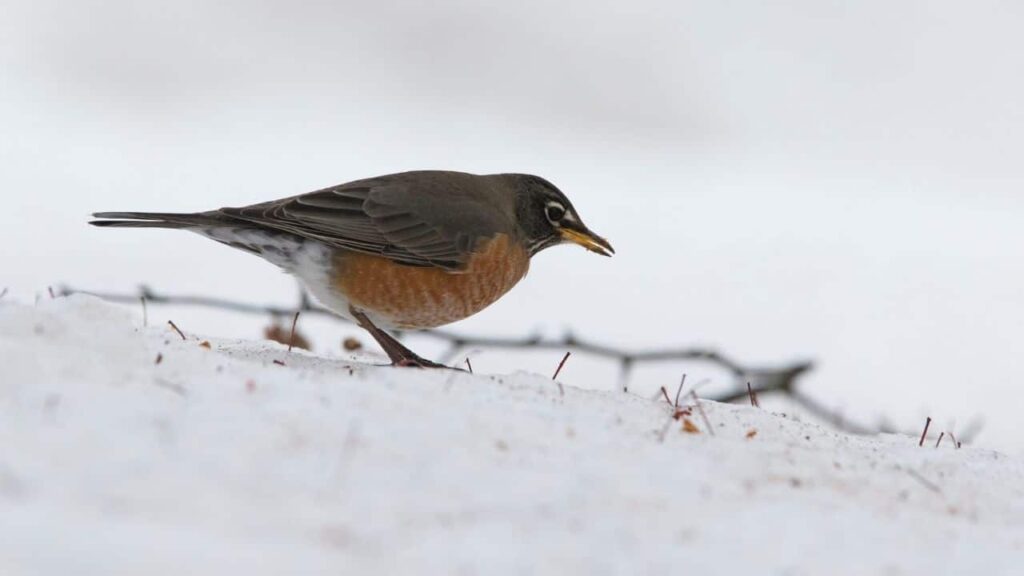
Conclusion
During the winter months, robins primarily rely on berries as a vital food source. These berries provide not only essential sustenance but also a source of hydration, particularly when other water sources freeze over. Robins have evolved to be expert berry pickers, selecting fruits from various shrubs and trees, including holly, sumac, and juniper. This reliance on berries highlights the critical role these plants play in the winter ecology, as they provide a lifeline for robins and other berry-eating wildlife.
Robins’ adaptability is a key factor in their winter survival. While berries are a staple in their diet, they are not limited to this food source alone. These birds are opportunistic feeders, and they readily adjust to local conditions and food availability. This flexibility extends to consuming frozen fruits and taking advantage of backyard bird feeders stocked with seeds when needed. This adaptability underscores the ingenuity of robins in finding sustenance even when faced with unpredictable and harsh winter conditions.
Understanding the winter diet of robins not only deepens our appreciation for their resilience but also emphasizes the interconnectedness of ecosystems. The availability of berries and other winter foods depends on the health of local habitats. Conservation efforts to preserve these habitats are crucial not only for robins but also for the diverse array of wildlife that relies on them. As we marvel at the enduring spirit of robins in the winter, we are reminded of the beauty and complexity of the natural world. The story of what robins eat in the winter serves as a poignant reminder of the delicate balance that sustains life in even the harshest of seasons, and it inspires us to cherish and protect the ecosystems that nurture these remarkable birds and the many other species that share their winter landscapes.

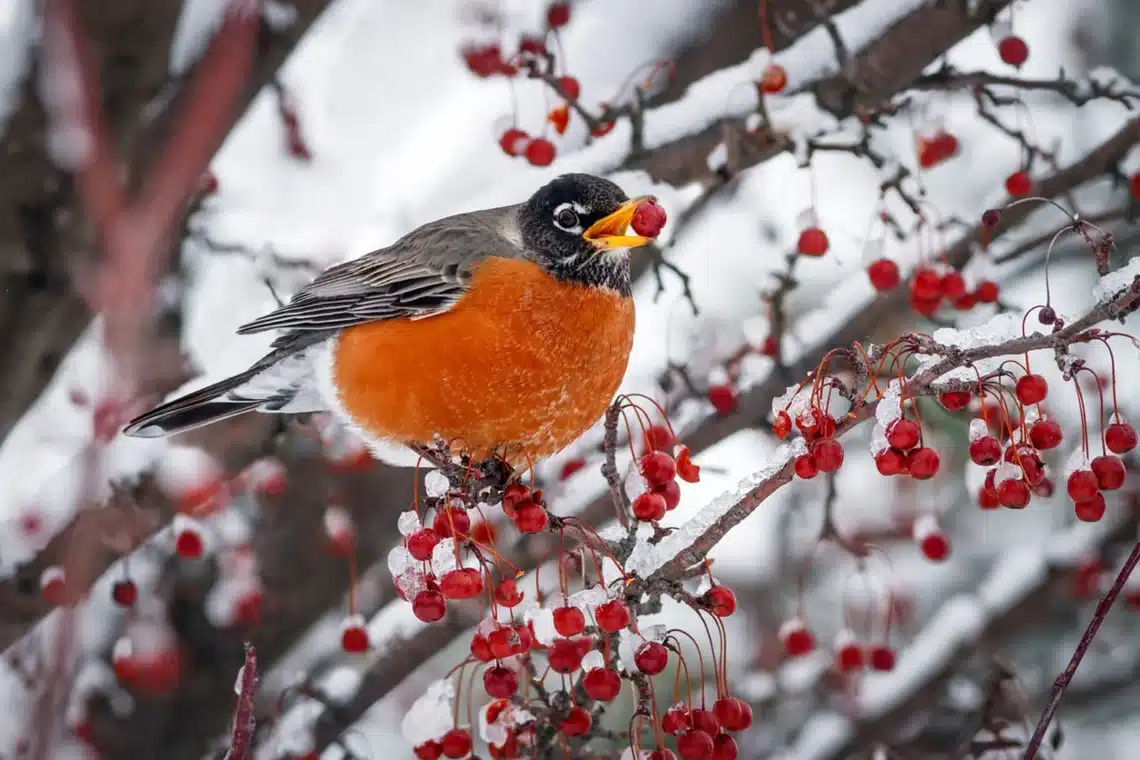
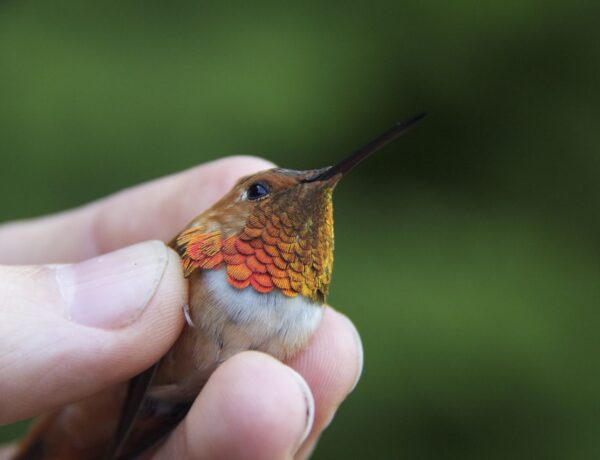
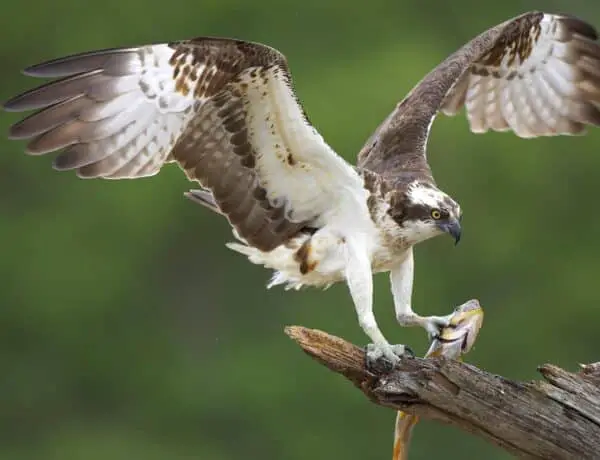
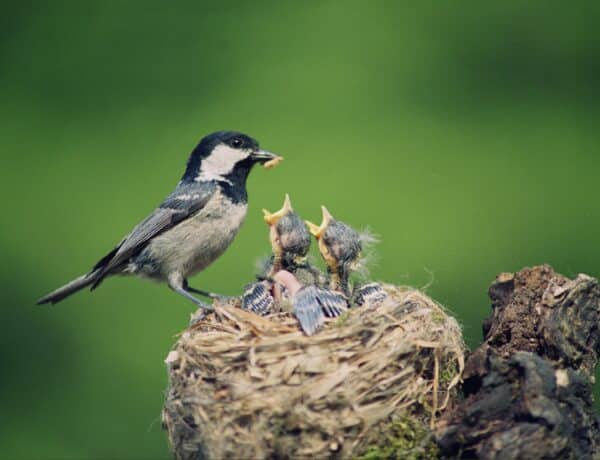
No Comments